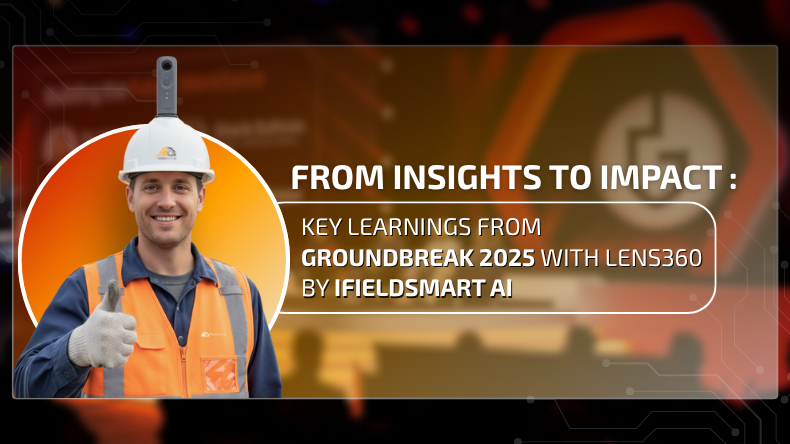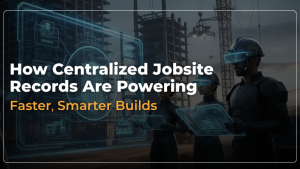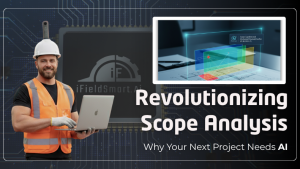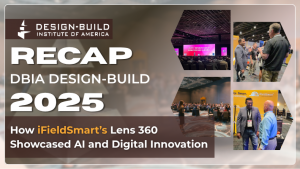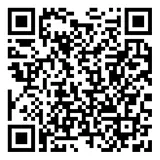Reading Time: 9 minutes
Three Days That Changed Everything
Walking into Groundbreak 2025, we thought we had it figured out. Show our platform. Network. Maybe grab some decent coffee.
What did we get instead? Three days that completely shifted how we think about construction technology.
As we exhibited our solutions, we were prepared to engage. However, the real treasure was in listening to hundreds of general contractors, superintendents, and project managers who expressed what challenges them.
Work Smarter, Not Harder
iFieldSmart empowers your team with AI-driven efficiency to simplify scheduling, boost collaboration, and keep projects on track.
Schedule a MeetingTheir challenges became our roadmap. And by day three, we’d learned more than any conference session could teach us.
Day One: The Integration Gap Nobody Talks About
The first day focused on workshops and product training. Everyone buzzed about connected platforms and streamlined workflows. But here’s what we discovered.
Most companies have individual tools. What they’re missing is the connections between them.
• Connecting Field Data with Your Digital Workflow
Let’s talk about something practical. If you’re using Autodesk Construction Cloud, Procore, you know it’s powerful for project management. But here’s the question we heard repeatedly: “How do I connect what’s happening in the field to what’s living in the cloud?”
Teams need integration with minimal need for field crews to understand the in-depth workings of the software. They capture reality, and the system automatically links that documentation to your existing project data.
Platforms like Lens360 by iFieldSmart address this by integrating directly with Autodesk Construction Cloud. Field documentation automatically links to RFIs, submittals, and project models without requiring extra effort.
• RFIs That Actually Make Sense
Here’s something that surprised us during workshops. The biggest time sink isn’t the physical work. It’s the back-and-forth trying to understand what someone meant in an RFI.
The solution isn’t complicated. Link your visuals directly to your RFIs and submittals. When someone asks a question, they pull up an immersive view of that exact location and understand the issue immediately.
No treasure hunts. No confusion. Just clear communication backed by visual evidence.
• VDC That Actually Reaches the Field
The workshop sessions talked a lot about VDC solutions and constructability reviews. Great concepts. But one thing became painfully clear during our conversations.
Most VDC work happens in the office. Most construction happens in the field. There is a huge disconnect between the two.
What’s missing is the bridge from design to field execution. The constructability reviews need to be accessible where the actual building happens. Field crews need to see the VDC model on their tablets while standing next to the work.
Day Two: AI That Actually Works
Day two shifted into leadership conversations and everyone’s favorite topic: AI and data analytics.
This is where things got interesting.
• Progress Tracking Without the Guesswork
Let’s break down what we learned about AI in construction. The hype says AI will revolutionize everything. The reality is more useful.
Progress tracking has always been subjective. You walk the site, estimate percentages, update your schedule, and hope you’re accurate. Then three weeks later, you’re way off and scrambling to catch up.
Here’s how 360 photo documentation progress tracking transforms the game. Here’s how 360 photo documentation progress tracking changes the game. You capture visual documentation of your job site. Teams can track the progress according to date, time, and location. The experts can analyze it against your plans and models, and detect deviations.
No guesswork. No optimistic estimates. Just data-driven insights about where you really stand.
The deviation detection piece is huge. Teams can spot when work isn’t matching the plan before it becomes a major problem. That wall that’s three inches off? You catch it now instead of during the final inspection.
• The AI Chatbot That Saves Hours
During data and machine learning sessions, people kept circling back to one frustration: information overload. Your project generates massive data, but finding the specific answer you need feels impossible.
An hour. Every single day. Just searching for information that already exists.
This is where AI chatbot technology for project intelligence makes sense. Instead of searching through several documents, you simply ask a query to your chatbot. The AI can recognize the context of your project and guide you directly to the answer.
• 360° Capture Without the Time Tax
Here’s the pushback we heard about reality capture: “It sounds great, but we don’t have time to document everything.”
Fair point. Your crews are busy building.
What surprised people was learning that comprehensive 360° jobsite capture takes about minutes. Walk the space with a 360 camera, and you’re done. The platform automatically processes everything and links it to your floor plan.
The time investment isn’t a burden. It’s insurance against all the time you waste explaining and resolving disputes about what actually happened.
• Digital Twins Aren’t Future Tech
Leadership sessions talked about digital twins as a futuristic concept. Here’s the thing.
Digital twins aren’t some technology. They’re happening right now.
A digital twin, in essence, is a virtual replica of the physical project that updates as construction continues. You take your BIM models and complement that with the typical reality capture, and the next thing you know, you have this living digital twin of your job site.
Why does this matter? It changes how you communicate with everyone involved. Owners virtually walk through their building before it’s finished. Engineers verify installations without site visits. Future facility managers train in the space before occupancy.
• VR That Makes Stakeholders Believers
The innovation showcase featured lots of emerging tech, but conversations around Oculus VR and AR stakeholder walkthroughs revealed something important.
People don’t need VR because it’s cool. They need it because it transforms how non-construction people understand construction projects.
Think about your typical owner meeting. You show 2D drawings and try to explain what a space will look like. Half the room is confused.
Now, picture yourself giving them a VR headset and letting them walk through the real space. They see the ceiling heights. They understand the spatial relationships. They experience the design instead of imagining it from flat drawings.
Day Three: Where Operations Meet Safety
The final day brought everything together around operational excellence and safety. All the technology had to prove it could actually improve how projects get built.
• Automated QA/QC That Works
Quality control. Two words that strike fear because they usually mean more paperwork and more time away from actual construction.
But here’s what we learned. The companies winning right now have figured out how to make QA/QC automatic instead of manual.
Picture automated QA/QC through observation reporting. Your regular 360 documentation isn’t just for progress tracking. The AI with experts analyzes it against your quality standards, automatically flags potential issues, and generates reports without anyone touching a clipboard.
You focus on fixing problems instead of documenting them. Reports are more thorough because complete visual documentation forms the basis for them. And you catch issues earlier.
• Constructability Reviews That Prevent Rework
The operational excellence theme kept returning to one expensive problem: rework. When builders build something wrong and need to redo it, you don’t just lose materials. You lose time, momentum, and morale.
This is where constructability reviews combined with VDC solutions prove their value. Before work starts, you compare your models to field conditions. You verify that what’s planned fits with what’s already built. You catch conflicts digitally before they become expensive physical mistakes.
The key is making these reviews part of your regular workflow, not some special exercise during design. Continuous constructability reviews keep you ahead of problems.
• Safety Through Documentation
Day three’s safety discussions revealed something we hadn’t fully considered. Better documentation doesn’t just help with progress tracking. It fundamentally improves safety.
360° jobsite capture plus digital twin documentation creates verifiable records of site conditions. You can prove that someone installed safety systems correctly. You can demonstrate that someone followed the procedures. You can identify hazards before anyone gets hurt.
One project had a near-miss incident. Instead of just filing a report, they pulled up their 360 documentation from the previous day, showing the opening was clearly marked and protected. That documentation led to better training.
• Progress That Keeps Teams Aligned
The people-centric sessions emphasized a crucial point: construction workers want to succeed. They focused on delivering projects on time and with quality work.
What frustrates them is when invisible problems derail their best efforts.
Progress tracking creates transparency. Everyone sees exactly where the project stands. No surprises. No hidden delays.
People-first construction puts your team at the center. It’s about technology that enables—not oversees.
What This Means for You
Three days at Groundbreak taught us about construction technology. Individual features are nice. Integration is everything.
Regardless of what tools teams use, make sure they align. Verify the gaps in the data flow between the systems. Your field team, office workers, and stakeholders must share the same information.
• Start With One Integration
Pick one workflow to connect first. Maybe it’s linking reality capture to your project management platform. Maybe it’s connecting submittals to visual documentation.
One integration at a time. But make them count.
• Focus on Practical AI
Invest in AI that solves real problems. Progress tracking that removes guesswork. Deviation detection that catches issues early. Chatbots that make information accessible.
Skip the AI that requires six months of training. You need tools that work on day one.
• Automate Quality First
Automate QA/QC before anything else. Quality problems cost more than any other issue. Catching them early through automated observation reporting saves money, time, and headaches.
• The Real Learning
The best part of Groundbreak wasn’t the formal presentations. It was the unscripted moments when people shared their real struggles.
The superintendent who doesn’t trust his own progress estimates. The VDC coordinator is tired of creating models nobody uses. The project manager is scared of falling behind competitors who’ve figured out AI.
These honest conversations revealed something important. The construction industry isn’t resistant to technology. It’s resistant to technology that doesn’t respect the reality of job sites.
The technology that wins is the technology that understands these constraints and works within them.
• Your Next Move
Ready to see how integrated documentation and AI-powered insights can transform your projects? Visit iFieldSmart to discover how Lens360 brings Groundbreak 2025 insights to your job sites, or learn more about our Groundbreak 2025 experience.
